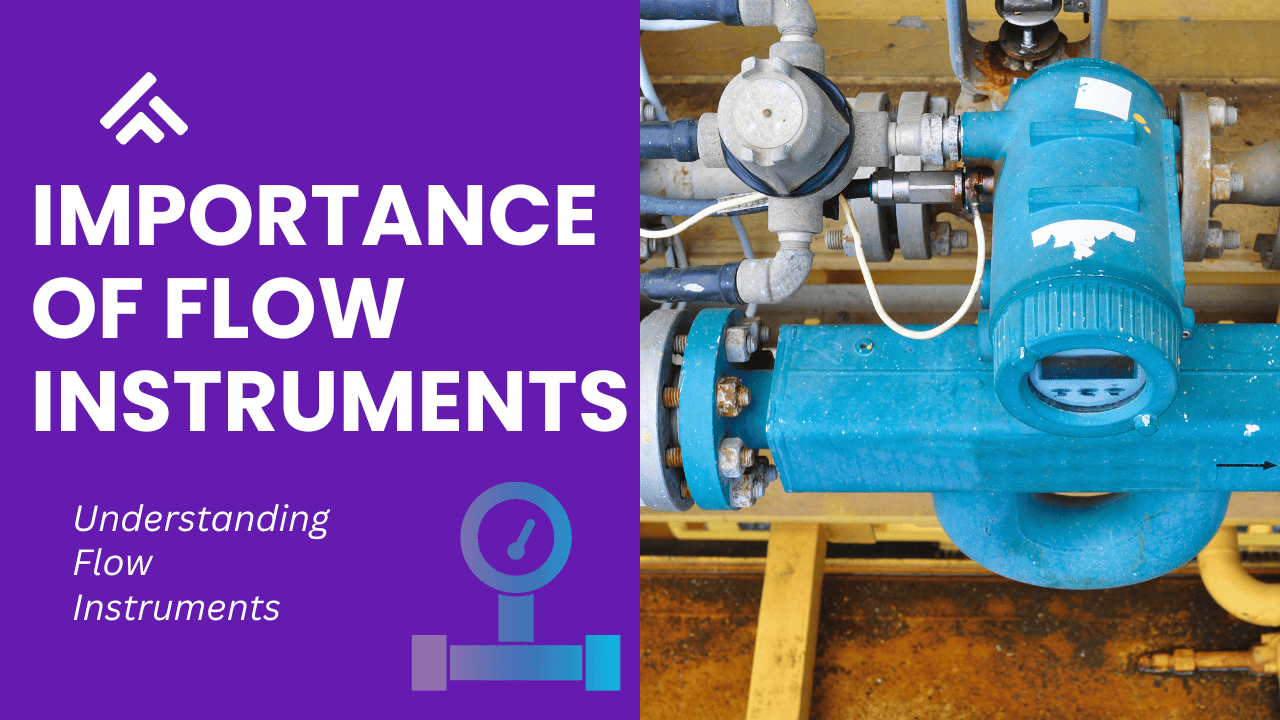Introduction
In the realm of fluid dynamics and process control, the accurate measurement and management of flow rates are paramount. Industries spanning from manufacturing and pharmaceuticals to energy and agriculture heavily rely on the precise control of fluids to ensure operational efficiency and product quality. This is where flow instruments play a pivotal role. Flow instruments encompass a range of devices designed to measure, monitor, and regulate the flow of liquids and gases within a system. These instruments not only enhance efficiency but also contribute to cost savings, improved safety, and environmental sustainability.
Understanding Flow Instruments
Flow instruments are diverse in their designs and functions, catering to a variety of industrial needs. They can be broadly categorized into different types, each serving a specific purpose:
Flow Meters: Flow meters are perhaps the most well-known and widely used flow instruments. They measure the volumetric or mass flow rate of a fluid as it passes through a designated point in a system. Various technologies are employed in flow meters, such as electromagnetic, ultrasonic, vortex shedding, and positive displacement. Electromagnetic flow meters, for instance, utilize Faraday’s law to measure the conductive fluid’s velocity, offering excellent accuracy and versatility. Ultrasonic flow meters, on the other hand, employ sound waves to determine flow rates, suitable for non-conductive fluids.
Flow Controllers: Flow controllers take the concept of flow measurement a step further by actively regulating the flow rate. They maintain a desired flow rate by adjusting control valves or other mechanisms based on real-time feedback from flow sensors. This closed-loop control system ensures that the flow remains consistent despite fluctuations in pressure or viscosity, making it crucial in industries where precise ratios or proportions are essential.
Flow Switches: Flow switches are primarily used for safety and protection purposes. They detect whether the flow of fluid has exceeded or fallen below a set threshold. When the flow rate crosses this predefined limit, the flow switch triggers an alarm or initiates an automatic shut-off to prevent potential damage to equipment or processes. These instruments are crucial in scenarios where the absence or excess of fluid flow can lead to catastrophic consequences.
Anemometers: While commonly associated with meteorology, anemometers are also considered flow instruments. They measure the speed and direction of gases (usually air) and are utilized in ventilation systems, environmental monitoring, and even HVAC (Heating, Ventilation, and Air Conditioning) applications.
Measuring Units of Flow in Flow Instruments
Here, we’ll explore some common measuring units of flow and how they are utilized in flow instruments:
Cubic Meters per Second (m³/s): This is an SI unit of flow measurement, representing the volume of fluid passing through a point in a system every second. It’s commonly used in water supply systems, wastewater treatment, and large-scale industrial processes.
Liters per Second (L/s): Similar to cubic meters per second, this unit provides the flow rate in terms of liters. It’s often used in applications where the flow rates are relatively smaller, such as household water usage or laboratory experiments.
Cubic Feet per Minute (CFM): Used primarily in countries that employ the imperial system, CFM measures the volume of gas flow in cubic feet that passes through a point in one minute. It’s common in HVAC systems and ventilation applications.
Gallons per Minute (GPM): This imperial unit is widely used in industries like firefighting, irrigation, and hydraulic systems. It measures the volume of liquid flow in gallons that passes through a point in one minute.
Cubic Centimeters per Second (cm³/s): Often used for precise measurements in laboratory settings, this unit expresses the flow rate in cubic centimeters per second.
Kilograms per Second (kg/s): This unit measures mass flow rate, indicating how many kilograms of a substance pass through a point in one second. It’s crucial in industries like chemical processing and pharmaceuticals.
Pounds per Hour (lb/hr): Commonly used in industries that deal with gases, this unit measures the mass flow rate in pounds passing through a point in an hour.
Standard Cubic Feet per Minute (SCFM): SCFM accounts for the variations in gas density due to pressure and temperature changes. It’s often used in applications where gas flow rates need to be normalized.
Barrel per Day (BPD): Typically used in the petroleum industry, this unit represents the flow rate of crude oil or other petroleum products in barrels over a 24-hour period.
Acre-Feet per Day: Common in irrigation and water resource management, this unit represents the flow rate needed to cover an acre of land with one foot of water in a day.
Million Gallons per Day (MGD): This unit is prevalent in water treatment and supply systems to measure large volumes of water flow. It represents the flow rate of one million gallons passing through a point in one day.
Standard Liters per Minute (SLM): Often used in gas flow measurement, SLM is a unit that standardizes the flow rate to a standard temperature and pressure (STP) condition.
Normal Cubic Meters per Hour (Nm³/h): Similar to SLM, this unit is used to measure gas flow rates at standard temperature and pressure conditions, but over an hour.
Tonnes per Hour (t/h): Used in industries like mining and materials handling, this unit measures the flow rate of bulk materials in metric tonnes passing through a point in an hour.
Importance in Industry
The significance of flow instruments in various industries cannot be overstated. Consider the following scenarios:
Chemical Manufacturing: In chemical processing plants, accurate flow measurement ensures that different reagents are mixed in the correct proportions, preventing unwanted reactions or compromised product quality. Flow controllers guarantee a consistent flow of reactants, leading to controlled and efficient chemical reactions.
Oil and Gas: The oil and gas industry relies on flow instruments to monitor the flow of crude oil, natural gas, and other fluids through pipelines. Flow meters accurately quantify extraction rates, aiding in production optimization. Flow switches help detect leaks or sudden drops in pressure, mitigating the risk of accidents or environmental damage.
Pharmaceuticals: In pharmaceutical manufacturing, precision is paramount. Flow instruments assist in maintaining the exact flow rates required for various stages of drug synthesis, ensuring that each batch is of the highest quality and potency.
Water Management: Municipal water treatment plants employ flow meters to monitor the distribution of water to different areas. Flow instruments help in detecting leaks, ensuring equitable distribution, and preventing water wastage.
Energy Generation: Power plants utilize flow meters to monitor the flow of cooling water, steam, and fuel gases. Accurate flow measurement enhances the efficiency of energy conversion processes while flow switches prevent overheating or undercooling, averting equipment failures.
Advantages of Flow Instruments
Flow instruments offer a multitude of advantages that significantly impact efficiency, accuracy, and overall operational excellence:
Accurate Data: Flow instruments provide real-time data on flow rates, enabling operators to make informed decisions. This accuracy is vital in maintaining the desired product quality and process efficiency.
Process Optimization: By closely monitoring flow rates, industries can identify inefficiencies and optimize processes. Flow controllers maintain consistent flow rates, reducing waste and energy consumption.
Safety Enhancement: Flow switches act as an additional layer of safety by detecting abnormal flow conditions. This is crucial in preventing equipment damage, environmental disasters, and ensuring worker safety.
Cost Savings: Efficient flow management leads to cost savings through reduced energy consumption, minimized waste, and extended equipment lifespan.
Regulatory Compliance: Many industries must adhere to strict regulations regarding emissions, waste disposal, and product quality. Accurate flow measurement ensures compliance with these regulations.
Challenges and Considerations
While flow instruments offer remarkable benefits, they are not without challenges:
Fluid Properties: Different fluids exhibit varying behaviors, viscosity, and conductivity. Selecting the appropriate flow instrument that suits the fluid’s properties is essential for accurate measurement.
Installation and Maintenance: Proper installation and regular maintenance are crucial for reliable performance. Any obstructions, corrosion, or sensor drift can lead to inaccurate readings.
Calibration: Flow instruments require periodic calibration to maintain accuracy. Deviations over time can impact the reliability of measurements.
Compatibility: Flow instruments must be compatible with the fluid and the system’s conditions. Extreme temperatures, pressure variations, and aggressive chemicals can affect instrument performance.
Future Trends
The field of flow instruments continues to evolve, driven by advancements in technology and industry demands. Some notable trends include:
IoT Integration: The integration of flow instruments with the Internet of Things (IoT) allows for remote monitoring, data analysis, and predictive maintenance. This enhances efficiency and reduces downtime.
Smart Sensors: Flow sensors equipped with advanced algorithms and signal processing capabilities can offer more accurate measurements even under challenging conditions.
Miniaturization: Miniaturized flow instruments are gaining traction, especially in applications where space is limited. These instruments retain high accuracy while being more compact.
Energy Harvesting: Researchers are exploring energy harvesting techniques to power flow instruments using the very flow they are measuring, reducing reliance on external power sources.
Conclusion
Flow instruments play an indispensable role in modern industrial processes, ensuring efficiency, accuracy, and safety in fluid management. From measuring flow rates to actively controlling them, these instruments are the unsung heroes that keep industries running smoothly. As technology continues to advance, we can expect flow instruments to become even more sophisticated, contributing to increased automation, data-driven decision-making, and sustainable practices across various sectors.








